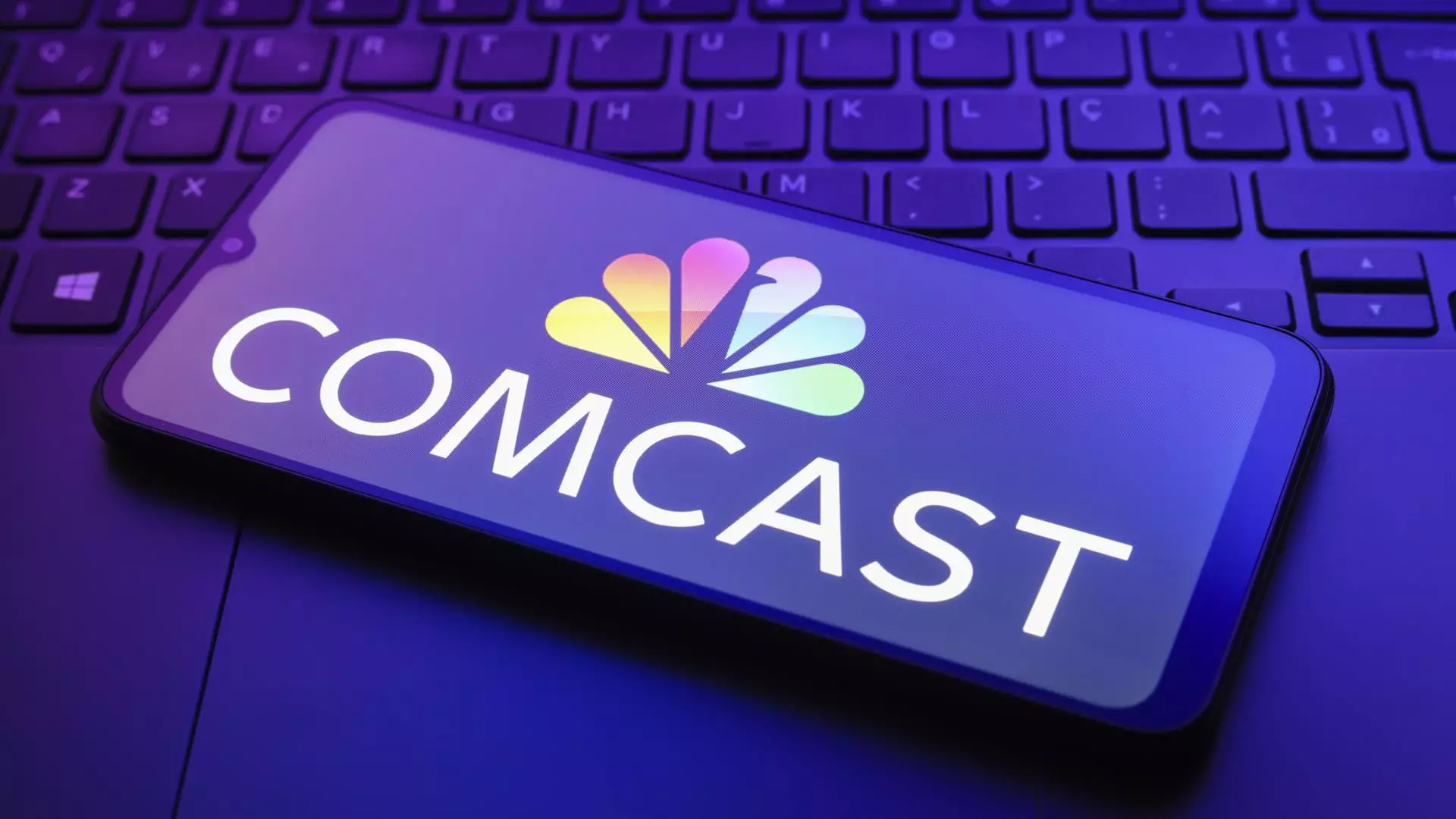In an era increasingly defined by digital marketing, Comcast’s new advertising platform, Universal Ads, aims to bridge the gap between traditional media and the online ad ecosystem. By providing a user-friendly platform for small and medium-sized enterprises (SMEs), Comcast hopes to redirect advertising revenue from social media giants back to the more traditional, yet revitalizing, space of premium video content. This innovation reflects a significant shift in the advertising landscape, especially as consumer preferences evolve toward streaming services and social media platforms.
The advertising sector is undergoing a transformation, driven by the growing dominance of social media and digital platforms. As consumers spend more time on platforms like TikTok and YouTube, traditional media is fighting for its place in a crowded marketplace. Comcast’s announcement of the Universal Ads platform is strategically timed, coinciding with the CES tech conference, highlighting its intent to seize new advertising opportunities amid this evolving landscape. Mark Marshall, the head of global advertising and partnerships at NBCUniversal, pointed out that the initiative is geared towards attracting advertisers who have not yet explored traditional avenues, thereby expanding its reach.
One of the key components of Universal Ads is its simplification of the ad buying process, which has traditionally been seen as cumbersome and complicated for those outside the media industry. James Rooke, the president of Comcast Advertising, emphasized the intention to make ad purchases as straightforward as those on digital platforms. This approach aims to cater specifically to SMEs, who often lack the resources to navigate complex advertising landscapes dominated by big players. Rooke’s insights suggest that simplicity in transactions can empower advertisers to diversify their strategies away from the technology behemoths that currently dominate the digital advertising space.
The strength of Universal Ads lies not only in its architecture but also in the partnerships that underpin it. Comcast has aligned itself with several other media companies, such as A+E, Fox Corp., and Roku, creating a consortium of outlets where advertisers can buy spaces. This multi-venue approach helps to create a unified platform, enhancing the appeal of traditional media against the backdrop of social media’s vast reach. By offering SMEs a consolidated space to advertise across various interconnected platforms, Universal Ads could well emerge as a formidable competitor to existing digital advertising giants.
In addition to facilitating ad purchases, Universal Ads is set to incorporate automated, AI-driven tools to aid in ad creation. For SMEs struggling with creative resources, this feature could alleviate one of the most significant barriers to entry in the advertising world. By leveraging technology, advertisers can quickly produce and adapt their materials to fit a dynamic marketplace, aligning with a culture that increasingly prioritizes agility and responsiveness.
Despite its promise, Universal Ads is not without challenges. The established digital advertising market is highly competitive, with firms like Meta boasting over 10 million advertisers. In contrast, traditional media entities like NBCUniversal struggle to match this scale. While leaders in the industry remain optimistic about potential growth in traditional media, statistics suggest that digital and social media investments will continue to expand at a more rapid pace. As traditional ad revenue seeks stabilization, the looming question remains: can Universal Ads attract enough advertisers to make a dent in considerably larger digital budgets?
Consumer behavior is shifting, with younger demographics leaning toward streaming services and social media rather than traditional television. As this trend unfolds, advertisers are on the lookout for platforms that genuinely connect with their target audiences. The prominence of live sports and major televised events still gives traditional media an edge in reaching broad demographics; however, Comcast’s strategy with Universal Ads also ties into a notable demand for flexibility in ad placements. By aligning with consumer preferences, Comcast may seize an opportunity to reclaim market share from the tech giants.
Comcast’s entry into the advertising space with Universal Ads signals a pivotal moment for traditional media seeking rejuvenation. By simplifying ad acquisitions for SMEs and leveraging advanced technology, Comcast is positioning itself to not only compete with online platforms but to lead a new wave of advertising strategies that integrate both traditional and digital offerings. The next few years will be critical in determining if Universal Ads can capture the attention of a diverse pool of advertisers and create a sustainable business model that benefits all stakeholders involved in the evolving advertising landscape. As the media industry adapts, the success of such initiatives will shape the future dynamics between traditional and digital advertising realms.

